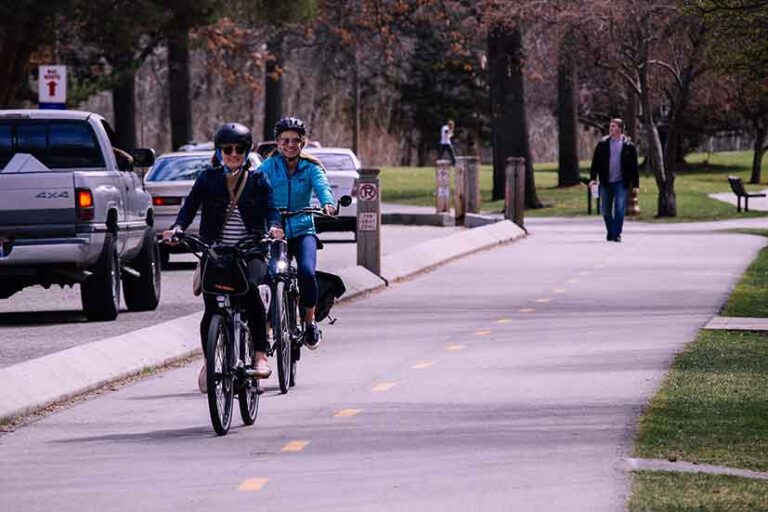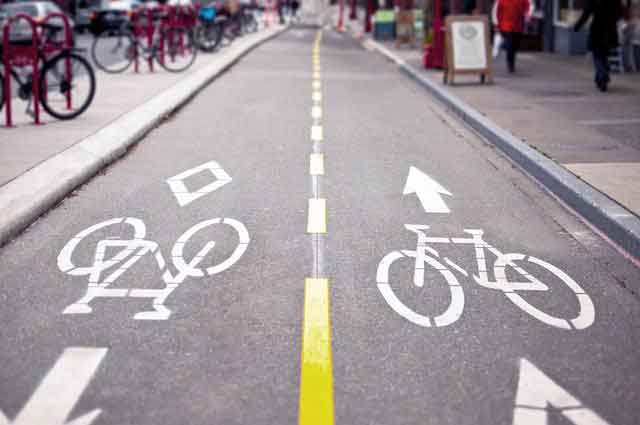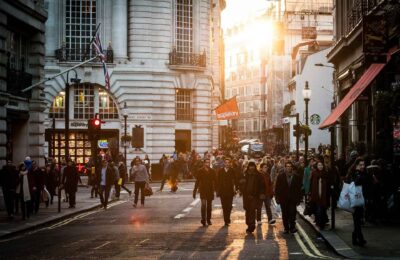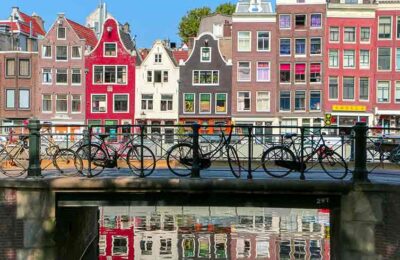Globally, road transportation accounts for three-quarters of transport emissions. About 74.5% of transport emissions are generated from road vehicles which include 45.1% from cars, buses, motorcycles and taxis while 29.4% comes from trucks and lorries. This reveals the need for alternate road transport options for reducing global emissions from the transport sector.
Several countries are working towards net-zero cities. The transportation sector plays an important role in achieving that goal. The sector has carbon-intensive infrastructure like roads, airports and automobiles. High in fossil fuel use, it’s a challenge to reduce carbon emissions from the transport sector.
Does electric vehicle help in reaching net-zero goals for cities?
Electric vehicles are considered to be one of the solutions to reduce emissions from road transport. Cities are implementing EV policies and strategies to enhance the use of electric vehicles on roads.
Globally, the electric vehicle (EV) market is growing at an exponential rate with about 7.2 million electric cars sold in 2019, with China being the largest EV seller with 47% of the global sales. Europe surpassed China to deliver more electric cars in 2020 with a 137% increase in a distributed auto market.

Tesla took the lead and sold almost 500,000 electric cars in 2020.
Although EVs reduce emissions, they are not fully zero-carbon. Manufacturing EV, drilling the raw materials for batteries to use in EVs release carbon emission.
Research indicated that it would take at least 15-20 years to replace conventional vehicles with electric/new vehicle technology in the world.
To mitigate ongoing climate change issues and air pollution, it is important to implement measures that have an immediate positive impact on the environment. Electric vehicles appear to be one of the solutions to remove conventional vehicles on roads, but it only partly supports net-zero goals.
Is there an alternative travel mode to achieve climate targets at a faster rate than electric cars?
Role of active travel
Active travel modes such as walking, and cycling has the potential to reduce carbon footprint compared to automobiles. They are cost-effective and faster to implement than electric vehicles.

Walking and cycling have benefits for emissions, air quality, public health and equity in a city.
European Union numbers reveal that a 33% decrease in the number of car trips taken in the continent’s cities would naturally lessen harmful emissions, noise pollution and road congestions.
Most cities are planned for a car-dominant lifestyle, which likely encourages people to accommodate to what appears as convenient and available for them to move around the city.
Promoting active travel such as walking, and cycling is the best way to quickly reduce emissions and support net-zero city targets.
However, several cities lack proper pedestrian and cycling infrastructure, which also appears unsafe for the people. Only 6% of the total miles are travelled by cycles in the world. This reveals the need for an increase in travel modes that has less impact on the environment. To increase the number of cyclists, the focus must be given to improving active transport infrastructure.
When the right infrastructure is provided for pedestrians and cyclists, cities could see significant growth in the modal shift towards active travel. The shift also increases the quality of life and health of the residents.
What are the benefits of walking and cycling for the urban environment and its residents?
- Limits carbon footprint from the transport sector.
- Improves public health through physical exercise and mental well-being.
- Needs limited city space than automobiles and infrastructure (Parking and roads).
- Accessible infrastructure that improves the social and economic conditions of urban areas.
- Promotes a less polluted urban environment and improves quality of life.
The COVID-19 pandemic revealed the importance of creating a compact neighbourhood with access to basic facilities. Lockdowns made people confined to their homes, which saw almost half of the daily carbon emissions reduction from the transport sector.
Active travel has the potential to achieve net-zero targets much quicker than electric cars. Taking the streets back from cars, active travel can promote a healthy lifestyle with walking and cycling.
A high-quality infrastructure for pedestrian and cycling facilities will provide long-term benefits for the people and the environment.
What should government propose?
Policies and strategies play a critical role in supporting active travel and reducing car-dependent lifestyles.
- Compact and mixed-use neighbourhood design and concepts
During the COVID-19 pandemic, Paris implemented a’15-minute city’ urban design concept to improve quality of life where the needs of people are met within a 15-minute by walking, cycling or public transit.
Likewise, many cities are incorporating similar strategies to enable active travel in cities. Such transformations are required in different cities with a unique vision to enhance active travel for their residents.
- Changing behaviours
Globally, urban transformations that support active travel could improve the city’s goal towards meeting net-zero targets in a cheaper and quicker method. Policies and regulations must provide people with choices other than cars.
Comfort, safety and quality of the infrastructure are particularly important to encourage people to choose active travel and reduce their carbon footprint. City planners must improve the conditions of active transport infrastructure.
- Developing safe and high-quality infrastructure
Cities with low pedestrian and bicycle facilities must formulate targets to enhance infrastructural development, providing separate lanes for pedestrians and bicycles by redesigning car lanes. The measures have the potential to increase traffic from active travel.
When more people use the active form of transport, the number of cars reduces on streets allowing safer travel for people using different modes of transport in an urban environment.
Considering the positive benefits form walking and cycling, it will be the best travel infrastructure for the urban environment and its residents.

Bike lanes provide a safe route for cyclists and reduce congestion
Electric vehicles prove as a solution to remove conventional vehicles on streets, but they take at least two decades to convert every vehicle in the world. Moreover, EVs release carbon emissions during their manufacturing process.
On the other hand, active travel modes have the potential to quickly reduce carbon emissions from the transport sector. Lack of proper pedestrian and cycling facilities seem to be one of the barriers to using active travel modes dominant on roads.
Policies and measures supporting walking and cycling facilities and infrastructure can induce a change in an urban environment and help achieve net-zero goals.
Both electric vehicles and active transport modes are required for achieving net-zero goals. However, active modes could accelerate the process by reducing emissions from the transport sector at a faster rate.

